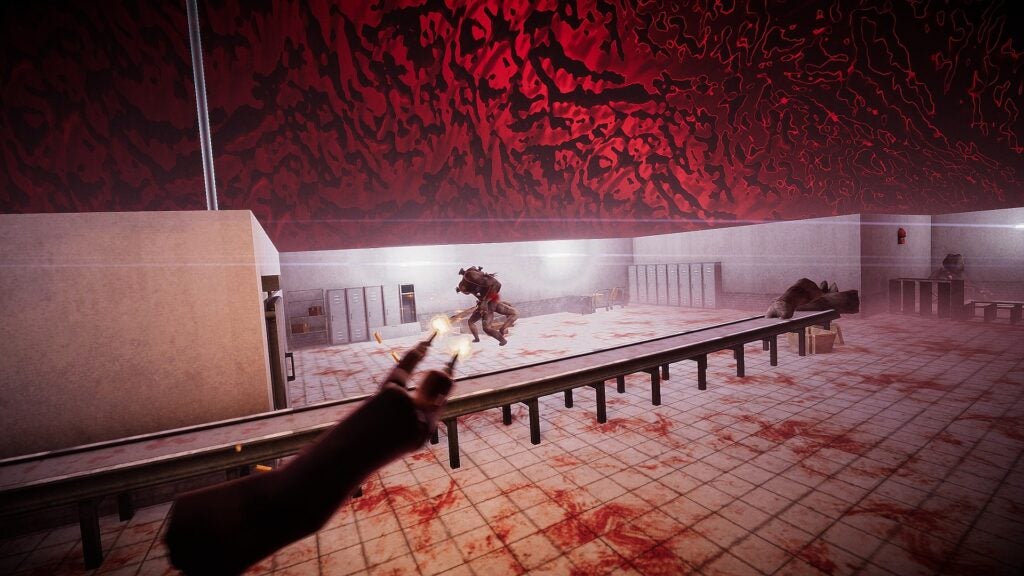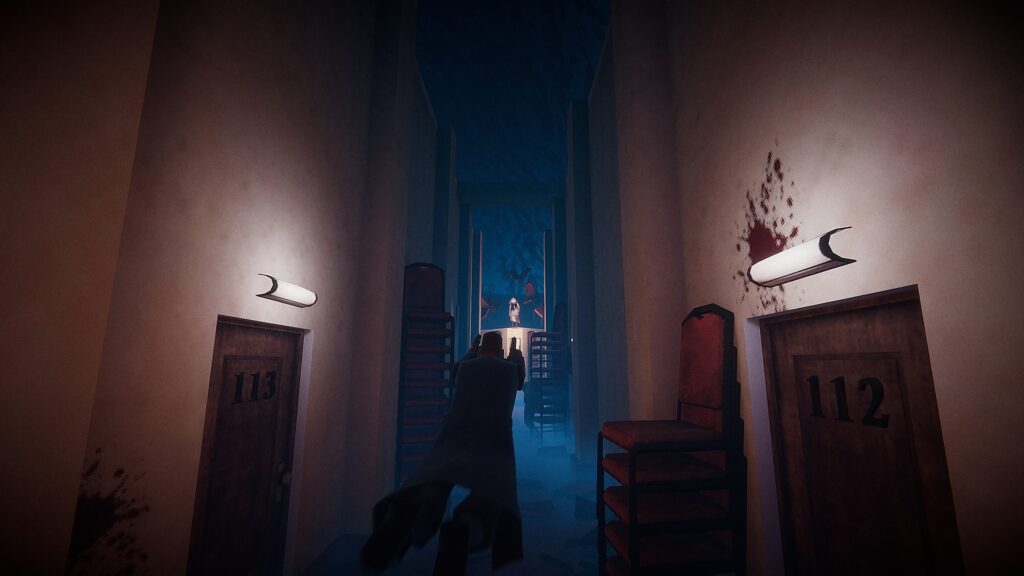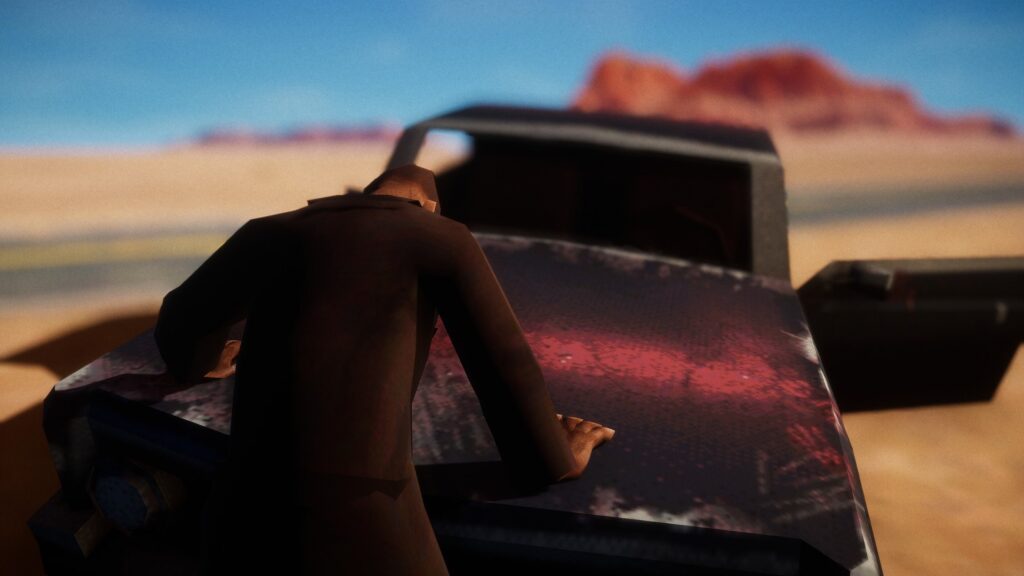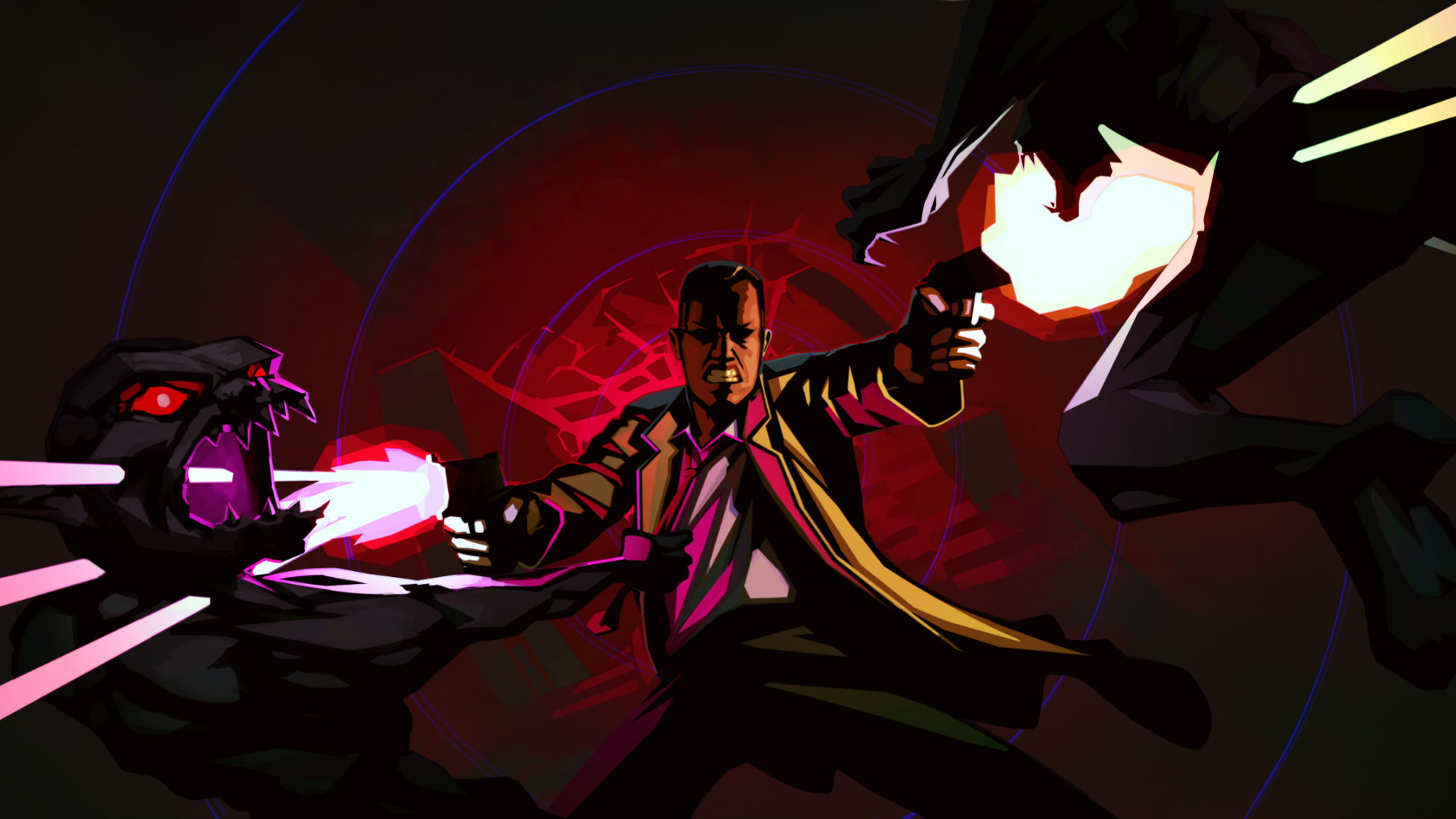El Paso, Elsewhere is the second game in the “El Paso” universe, following up the first-person shooter of EL PASO, NIGHTMARE that leads into the events for this game. Coming from the folks at Strange Scaffold, this is a supernatural third-person shooter with slo-mo dives, and tools to vanquish werewolves and vampires with ease. Told like a noir piece, the game in its two parts feels like an ode to Max Payne. It’s this then where it disappoints, never reaching the heights of that game from either a story or gameplay perspective. It’s an enjoyable game in its own right, but has far too many quibbles to be fully enjoyed.

El Paso, Elsewhere introduces us to our protagonist James Savage, a man who’s on a one-way trip to end the nightmare that’s been inflicted. The worst part is that his former lover, Draculae is behind it. Given the name, you know more about her than you do James. It’s a desperate plea from a desperate man, but he’ll do anything to fix it. From moment one, the game wears its Max Payne influences on sleeve, from the dreamy platforming sequence to the pills needed to top-up your health to the slow-motion dives. However, El Paso, Elsewhere never manages to step out of that game’s shadow to do enough of its own.
The gameplay loop is rather rote: Leave elevator, kill enemies, free hostages, and fight your way back to the elevator to go to the next level. This is repeated ad nauseam for 50 chapters, and there’s only a handful I found to be memorable. It hurts that you most times have to backtrack or loop around to take the same elevator you arrived at. I think a lot of what hurts the game is the fact that it’s set in a motel. Now there are levels that are decidedly not in a motel, as the place can shift and morph into whatever it needs to be for storytelling purposes. But this knowledge that this is only a motel lingers as you play through it. It feels like the game never truly goes anywhere.

The gunplay is varied and exciting. You have to make a lot of skill-based decisions around shooting and movement. Do you dive through that doorway and shoot back, or do you take cover and pop pills to restore health? You’ll also quickly learn to make informed decisions around what weapons work best. The game introduces weapons and enemies simultaneously to aid in this. The vampires go down with the pistols, werewolves are best dispatched with shotguns, and the teleporting enemies are best killed with the typewriter or Tommy gun. It’s a really smart system of weapons where any can kill, but there is an ideal weapon for each one. If you happen to run out of ammo, you do have stakes to fully kill them. Run out of stakes though, and you can only melee hit that doesn’t ever kill until you find actual ammo.
Levels go quick here, as you’ll be finishing levels in several minutes, at least for the first half of it. Levels become more complex as the game goes on, introduce color-coded keys in the form of hearts that gate your progress and slow things down. The “hotel hell” is a great metaphor, but not a great way to create a sense of place. Many areas are reused throughout, and the motel does transform into cemeteries, bathrooms, and the like, but it isn’t enough to shatter the illusion of where you really are. El Paso, Elsewhere is rife with narrow corridors and tight spaces that offer a challenge, but are too cramped to feel like you’ve got a choice in how combat encounters go.

The game took me six hours to complete, but I can see this taking up to eight hours. Each chapter has checkpoints to save your progress throughout, as there are no manual saves. If you die, you’ll start from the last checkpoint. If you quit the level, then you will start the whole level over and not resume a checkpoint. It is possible to replay levels, but I never found any real reason to do that either from a gameplay or collectible perspective.
While you shouldn’t need or want to do this until a second playthrough, the cutscenes can be paused or outright skipped. Xalavier Nelson Jr. is Strange Scaffold for all intents and purposes. There are many people on the team, but he has many credits in the game. To include voicing the main character, and performing on the soundtrack that offers hip-hop beats that blends real well with the action – so much so that you’ll be bopping your head as you play.

I have to say, the game runs and plays great. It even works on ultrawide monitors flawlessly. The game’s decidedly PlayStation-era graphics and colored lighting is really satisfying. The blood chunks that come off of enemies is awesome. While this is a “what you see is what you get” kind of game, it doesn’t disappoint visually.
My PC Specs:
– Microsoft Windows 11 Pro
– Intel Core i9 13900K @ 5.8GHz
– ASUS ROG RYUJIN II 360 ARGB AIO Liquid CPU Cooler
– G.SKILL TRIDENT Z5 6000MHZ 64GB (32×2) DDR5 RAM
– ASUS ROG Strix GeForce RTX 4080 16GB GDDR6X
– WD_BLACK SN850X M.2 (4 TB)
– LG UltraGear 34GP950B-G (21:9 Ultrawide @ 3440×1440)

El Paso, Elsewhere calls back to the early 2000s with slow motion dives and psychedelic dream sequences with platforming, but it fails to feel like it’s breaking new ground despite its differences. This is a Max Payne -like that doesn’t have a sense of place or personality. A motel just doesn’t cut it, no matter what you do with the interior. There’s a lot to like with the story set around responsibility, the neo-noir writing, and even its aesthetic. But when it comes to gameplay, you’ll get into a rhythm with it, but it can’t keep up with its own beat. El Paso, Elsewhere is fun for its runtime, but you’ll be ready for it to be over once the credits roll.
A Steam code was provided in advance by the publisher for review purposes
